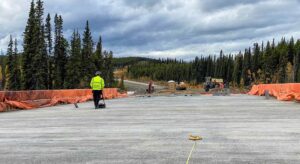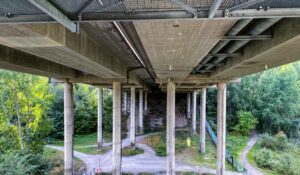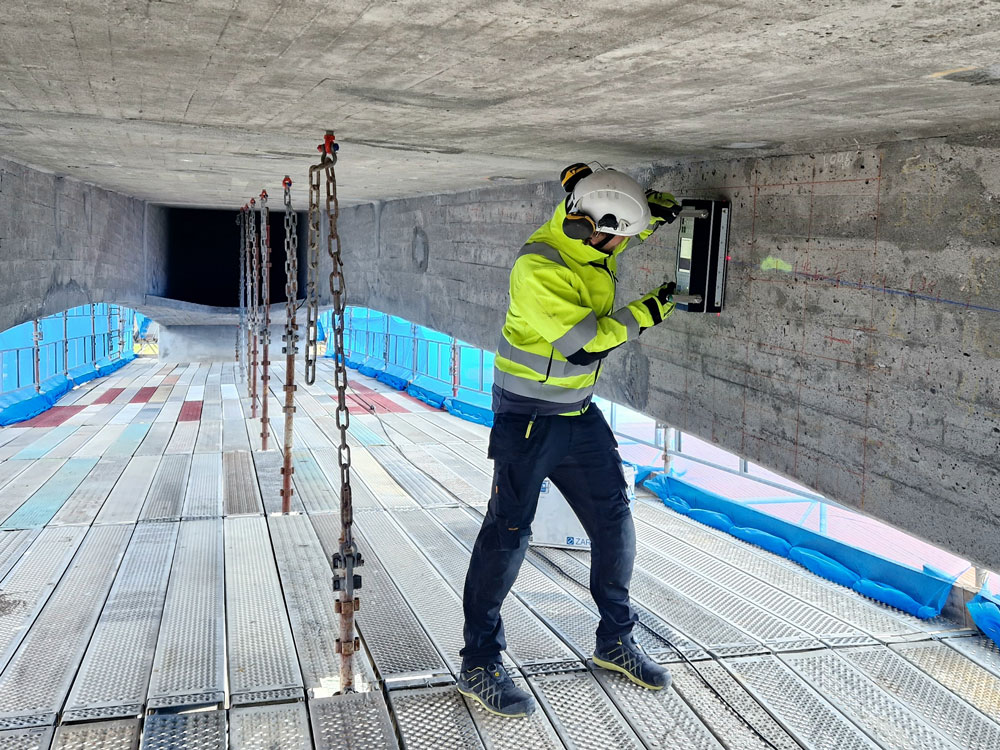Problem statement
The client was interested in monitoring cracking and stresses in the reinforcement of a railway bridge built with slack reinforced concrete. The aim was to do this in a cost-effective way, while making it easy to access the measurement data.
Solution
Our proprietary wireless measurement system was installed on the bridge, and the entire installation took about two days. During the installation, strain gauges were mounted at four locations on the reinforcement, and crack sensors and accelerometers at two locations. The customer’s primary focus was to evaluate the functionality of the system. Installation and data access went smoothly, but a challenge was the battery operation, as the energy consumption turned out to be higher than expected. Through this project, we demonstrate that monitoring infrastructures and buildings through measurements can now be done in a simple and time-efficient way.
Planning
- Calculations of critical sections.
- Mapping of cracks and defects.
- Mapping of sensors, nodes and base station location.
- Compilation of measurement program (What to measure, when and with what).
Installation
- Installation of base station with 4G antenna and router. This requires electrical power.
- Installation of sensors (welded sensors on reinforcement, crack sensors over selected cracks, accelerometers to record movements and temperature sensors).
- Assembly of nodes.
- Interconnection of sensors and nodes.
- Calibration of the system.
Measurement and processing
- Measurement at a distance.
- Data uploaded to the cloud.
- Post-processing of data against computational models or against more advanced machine learning algorithms.
Maintenance
- Battery change every 3 months (here you can choose to draw power directly to the nodes and then no batteries are needed, this depends on the possibility of power supply).
- Review of the system every 6 months.
Standard
Modified ISO 13822.
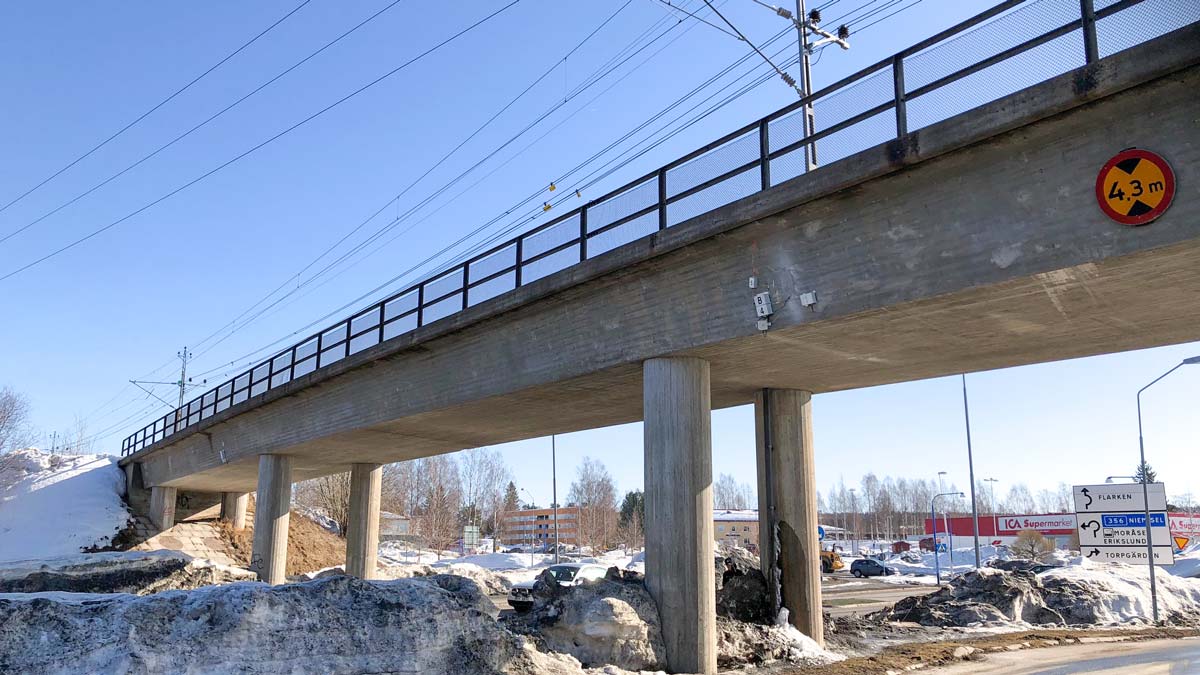
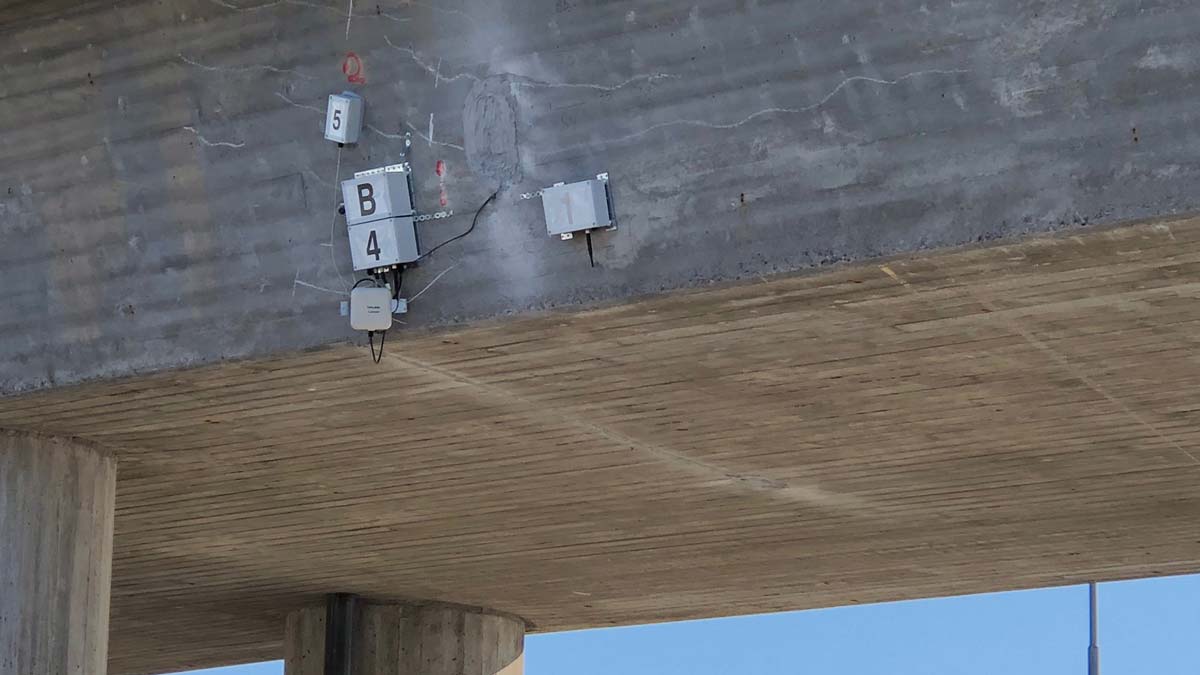
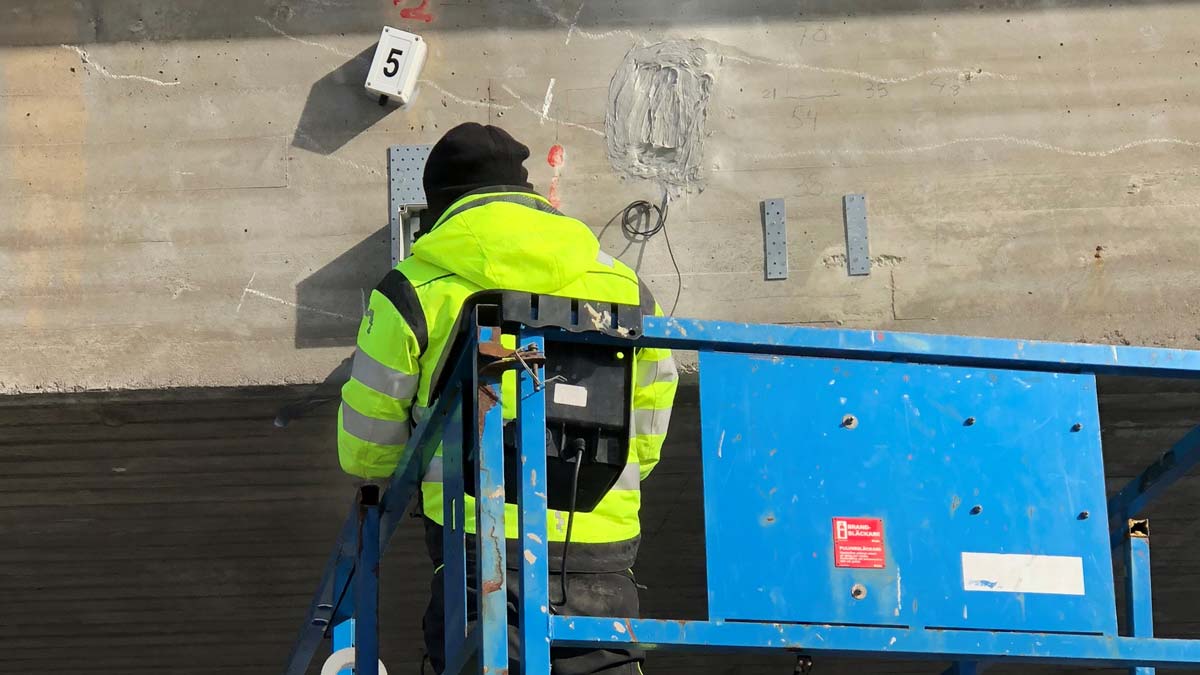
Commentary
The installation of the system was simple, important to consider is the placement of the antenna. Partly between the base station and the nodes – partly for the base station antenna so you can access the 4G network. Another challenge is to collect the right amount of data, otherwise the amount can become unmanageable. We are currently working on developing automated systems that automatically compile essential and important data to make it easier to verify models and assumed modes of action.

